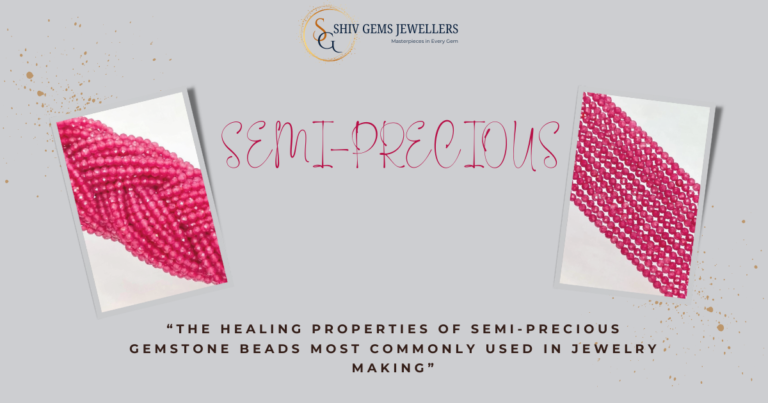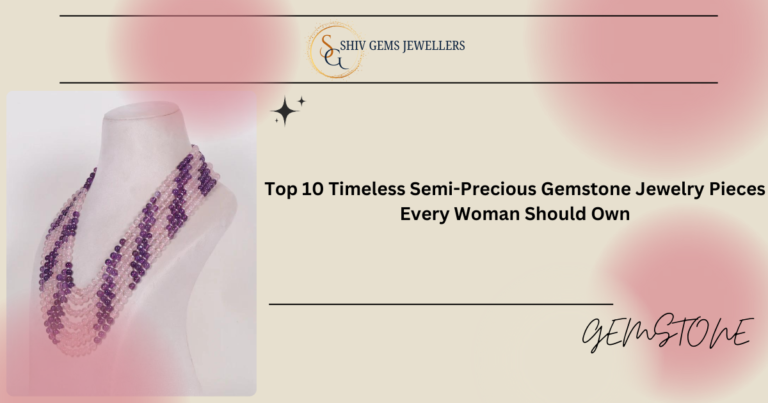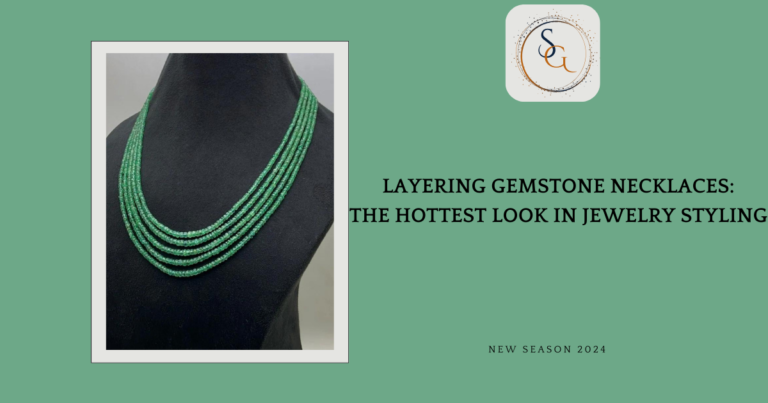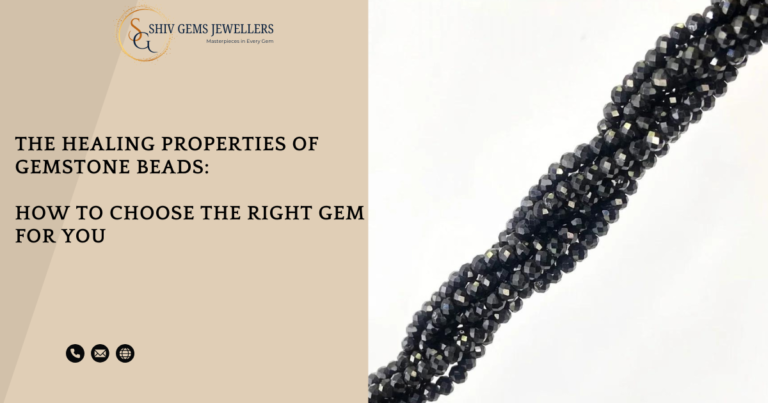Gemstone beads have long been integral to traditional jewelry across the globe, playing a significant role in cultural, spiritual, and artistic expressions. Their use in traditional jewelry reflects a rich tapestry of history, symbolism, and craftsmanship. Here’s an in-depth look at how gemstone beads are employed in traditional jewelry-making:
1. Historical Context
The use of gemstone beads in traditional jewelry dates back thousands of years. Ancient civilizations such as the Egyptians, Greeks, and Romans crafted elaborate pieces using beads made from precious and semi-precious stones. These early uses were not merely decorative; gemstones were imbued with various symbolic meanings and were often believed to provide protection, healing, and spiritual benefits.
2. Cultural Significance
Across different cultures, gemstone beads are more than just ornamental elements—they carry deep cultural and spiritual significance:
- Indian Jewelry: In India, gemstone beads are a cornerstone of traditional jewelry. For centuries, gemstones like diamonds, emeralds, rubies, and sapphires have been used in intricate designs. Each gemstone is associated with specific astrological and spiritual properties. For example, the use of emeralds is linked to Mercury, believed to enhance intelligence and wisdom.
- Native American Jewelry: Native American tribes, including the Navajo, Hopi, and Zuni, incorporate gemstone beads such as turquoise, coral, and lapis lazuli into their jewelry. These beads are crafted into intricate patterns and designs, symbolizing various spiritual and cultural values, including protection and healing.
- African Jewelry: In many African cultures, gemstone beads are used in traditional adornments that signify status, fertility, and social roles. For example, in West Africa, beads made from agate, carnelian, and other stones are used in elaborate necklaces, bracelets, and headpieces that are both decorative and symbolic.
3. Techniques and Craftsmanship
Traditional jewelry-making techniques involving gemstone beads are diverse and showcase exceptional craftsmanship:
- Stringing: Beads are often strung on threads or wires to create necklaces, bracelets, and anklets. The process involves careful selection and arrangement of beads to achieve the desired aesthetic.
- Bead Weaving: This intricate technique involves weaving beads together using needle and thread to form complex patterns and textures. Bead weaving is common in Native American and African jewelry traditions.
- Bead Embroidery: In bead embroidery, gemstones are sewn onto fabric or leather to create decorative designs. This technique is prominent in Indian and Southeast Asian jewelry, adding texture and richness to the pieces.
4. Symbolism and Beliefs
Gemstone beads in traditional jewelry often embody symbolic meanings and are used in rituals and ceremonies. For instance:
- Protection and Healing: Many cultures believe that certain gemstones have protective and healing properties. Turquoise is considered a protective stone in Native American cultures, while rose quartz is believed to promote love and emotional healing in Indian traditions.
- Status and Wealth: Historically, gemstones were also a symbol of wealth and social status. Elaborate jewelry pieces featuring high-quality gemstones were often worn by royalty and nobility to showcase their power and prestige.
5. Modern Adaptations
While traditional designs and techniques are still widely appreciated, contemporary jewelers often blend traditional gemstone beads with modern styles. This fusion allows gemstone beads to remain relevant in today’s fashion world while preserving their cultural heritage.
6. Preservation of Tradition
Using gemstone beads in traditional jewelry helps preserve cultural heritage and artisanal skills. By continuing to create and wear these traditional pieces, artisans and wearers keep alive the historical and cultural significance of gemstone beads.
Conclusion
Gemstone beads are indeed a fundamental component of traditional jewelry across various cultures. Their use spans from ancient times to the present day, reflecting not only their aesthetic appeal but also their deep cultural and symbolic meanings. Whether in elaborate ceremonial pieces or everyday adornments, gemstone beads continue to play a vital role in traditional jewelry, bridging past and present with their timeless beauty and significance.







